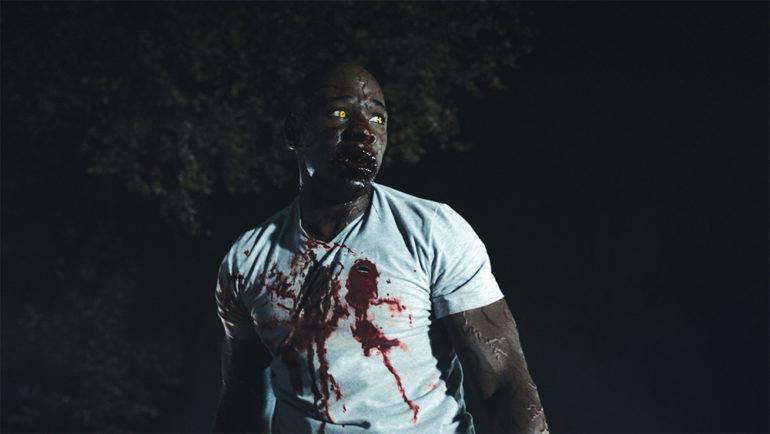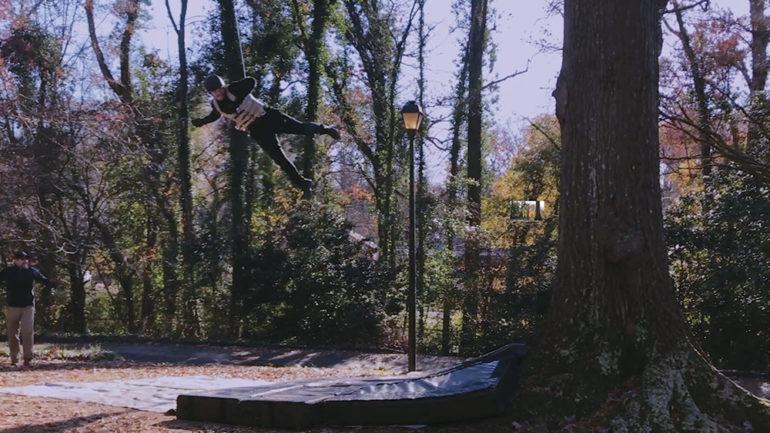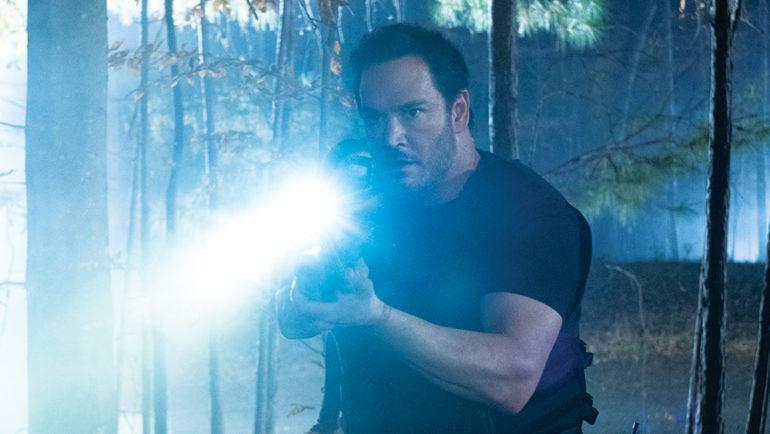‘The Passage’ Team on Designing the End of the World
By Danielle Turchiano
LOS ANGELES (Variety.com) – In the penultimate episode of “The Passage,” the virals escape their glass boxes and stalk the halls of Project Noah, looking to feed and get revenge on those who imprisoned them and turned them into blood-drinking immortal creatures in the first place. In the midst of the chaos, protagonists including Brad Wolgast (Mark-Paul Gosselaar), Dr. Lila Kyle (Emmanuelle Chriqui) and Amy Bellafonte (Saniyya Sidney) are trying to leave Project Noah as well. Their trek down a hallway includes multiple virals in their path, and culminates in an outdoor confrontation full of gunfire and hand-to-hand combat. While Brad and Amy are kept safe, the same cannot be said for Clark Richards (Vincent Piazza), who is thrown dozens of feet in the air, eventually striking a tree, left for dead.
Jason Ensler
Director
“The scene had to act as a big release. From the perspective of how we stay in the heads of our characters, it was really about getting wide lenses close on our heroes Wolgast, Amy, Lila as they run from the virals in the hallway, and then getting longer lenses on the virals so it almost felt like their points of views. It was about efficiently staging it, but luckily I’m in a straight line, so I’m only really shooting it on one axis. I also had to create the proper amount of chaos for your eye so that editorially I could get away with a few things and still keep the story moving. That’s why we did the flashing red lights and the female viral who rips down the light and creates the spark effect. [Outside] we had a lot of stunt players because it was a dangerous sequence, but I spent some time on Carter [McKinley Belcher III], to pit Carter against Richards, just to give him a formidable and known adversary.”
Byron Shah
Director of photography
“When we were out on the front lawn of Project Noah, we had a 50-foot Super Technocrane because we wanted to get overhead angles that would give us a sense of geography about how the virals are swarming the darkness and are discouraged by the bright lights. The A-camera on the crane was wide and close to the action so we could be on our heroes as they ran out, and then we also had a B and C camera getting close-ups. Stylistically we had been building toward this climax all season. Powerful light is one of the last refuges you have against these virals. We were really only keying the scene from the building, so all the light was meant to be coming from that super powerful bright light blasting from the building. We were shooting white and putting the red in on set, in-camera so it was a totally even balanced image recording. If you use red gel, you’re restricted because you’re not really photographing a full-bandwidth image.”
Tracey Anderson
Makeup department head
“That scene where they’re running outside, there’s like 15 virals running around, and you don’t know what you’re going to see. We have to get it right in the morning and jump in to touch up whenever we can. Addison Foreman was my key makeup artist and would airbrush McKinley Belcher III’s skin tone down so he had more of a deathly pallor to him, and then the two of us would lay down the veins. The amount of veins we used on him were five times the amount we used on other virals. I had asked if he could always be in that T-shirt because his arms are so incredible and you really see the veining in the arms, and that’s more effective. We used a lot of reds and purples because those are colors that are going to be the most effective, no matter what lighting; you’re never going to lose those colors.”
John Copeman
Stunt coordinator
“Jason knew he wanted the guy thrown from about 20 feet away. We had a day to rehearse it and we used an air ratchet, which is basically a piston you put air in and it retracts and yanks the person. We started with a test bag, weighted to match the stunt man, a gentleman named Fernando Campos. We put pads all around the tree, and once we got the distance and the pressure dialed in, we put Fernando on the line. He wore pads, and we would gradually go from an 8-inch pad to a 6-inch pad to a 2-inch pad, but he was actually being decelerated before he hit the tree, so he wasn’t hitting full-blast. On the day we were about 27 feet away, and it was 5 a.m., cold, and there was a gremlin in the machine, so the ratchet wasn’t performing fully, but we covered it really well.”



